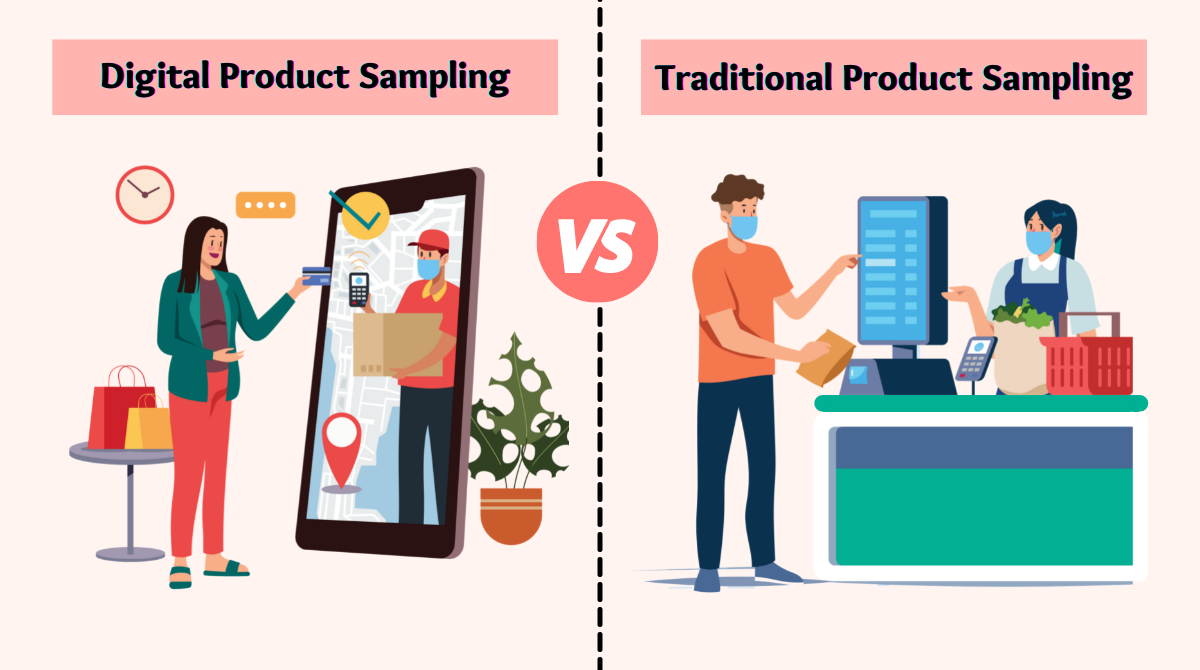In today's ever-evolving business landscape, change is the only constant. From consumer preferences to technological advancements, the pace at which industries shift can be overwhelming. Yet, many businesses operate reactively, scrambling to catch up instead of confidently steering ahead.
This reactive stance often results in missed opportunities, inefficient strategies, and declining relevance. That's where trend studies come in. A trend study empowers businesses to take a proactive approach, spotting early indicators of change and transforming raw data into actionable foresight. By leveraging trend studies, marketing professionals, product developers, and business strategists can stay ahead of market changes, anticipate customer needs, and make decisions with clarity and confidence.
Let's explore "What is a trend study?", why it matters across departments, how to conduct one, and the tools that make it easier than ever.
What Is a Trend Study?
A trend study is a research methodology focused on identifying patterns and shifts over time in consumer behavior, market dynamics, technological adoption, and industry practices. Unlike one-time surveys or snapshot reports, trend studies are longitudinal in nature, tracking data over months or years to uncover deeper consumer insights into how change unfolds.
Trend studies don't just reveal what's popular now; they explain why things change and where they are likely heading. They're widely used in industries ranging from retail and tech to healthcare and finance.
Key Characteristics of Trend Studies:
- Longitudinal Focus: Observes data across a defined period, capturing evolving behaviors rather than isolated incidents.
- Predictive Power: Uses historical patterns to project future market developments or consumer behaviors.
- Actionable Insights: Enables strategic planning in marketing, product design, and organizational development.
- Quantitative & Qualitative: Combines numerical data with sentiment, cultural shifts, and consumer psychology.
In short, a trend study isn't just a look at "what's hot"; it's a structured, ongoing process to foresee "what's next."
Why Trend Studies Matter
After understanding "What is a trend study," it's time to learn about its importance. Trend studies have broad applications across business units. Here's how they drive value:
For Marketing Teams:
- Anticipate Consumer Needs: Identify budding interests before they hit the mainstream.
- Fine-Tune Messaging: Align campaigns with cultural shifts and emerging values.
- Optimize Channel Strategy: Discover where your audience is moving, be it TikTok, podcasts, or new forums.
- Stay Culturally Relevant: Tap into lifestyle, fashion, social, and tech trends to shape brand tone.
- Budget Efficiency: Avoid investing in outdated platforms or tactics.
For Product Development Teams:
- Prioritize Innovation: Use future-focused data to create features/products that fulfill upcoming demand.
- User-Centric Design: Understand evolving customer pain points and expectations.
- Shorten Time to Market: Reduce lag by designing with foresight, not hindsight.
- Enhance Product-Market Fit: Develop offerings tailored to the trajectory of consumer behavior.
- Sustainable Innovation: Avoid chasing fads; validate trends with long-term data.
For Business Strategy & Executive Teams:
- Informed Forecasting: Back strategic planning with data-driven trend forecasting.
- Risk Management: Spot early indicators of market downturns or disruptive innovation.
- Competitive Advantage: Outpace competitors using competitive analysis by acting on insights they haven't yet seen.
- Smart Investment: Direct budgets toward high-growth areas backed by trend data.
- Cross-Department Alignment: Keep departments working toward shared, future-facing goals.
Types of Trend Studies: Cross-Sectional vs. Longitudinal
Understanding the types of trend studies helps you choose the right model based on your objectives and resources.
Cross-Sectional Trend Study:
- Definition: Analyze data at a single point in time across a variety of subjects.
- Application: Ideal for capturing a momentary snapshot of current trends or differences between groups.
- Strengths:
- Cost-effective
- Faster turnaround
- Useful for campaign or seasonal planning
- Limitations:
- Cannot track changes over time
- Provides surface-level insight without context
Longitudinal Trend Study:
- Definition: Track the same variables or groups over an extended period.
- Application: Useful for forecasting, innovation cycles, and long-term business strategy.
- Strengths:
- Captures deep-rooted patterns and behavior shifts
- Highlights cause-and-effect relationships
- Enables predictive modeling
- Limitations:
- Time-intensive
- Requires a consistent data collection methodology
Both types of studies are valuable; the choice depends on whether your priority is current positioning or future planning.
Read more: Unveiling Consumer Insights
How to Conduct a Trend Study: A Step-by-Step Guide
Conducting a successful trend study involves realizing "What is a trend study," as well as a structured approach to ensure reliability and relevance.
1. Define Clear Objectives:
- What exactly do you want to learn? For example: "Identify emerging beauty service preferences among Gen Z."
- Set measurable, realistic goals tied to business outcomes, such as improving customer retention or launching new services.
2. Identify and Prioritize Data Sources:
- Internal Sources: CRM data, sales metrics, website analytics, customer feedback, support queries.
- External Sources: Social media platforms, search engine trends, industry publications, consumer panels, competitor analysis.
Consider sources that provide real-time, historical, and predictive insights.
3. Collect Data Consistently:
- Choose a defined time frame (e.g., monthly, quarterly, yearly).
- Use automated tools or manual collection methods.
- Ensure uniformity; tracking the same variables over each cycle.
4. Analyze and Interpret Trends:
- Use statistical methods: regression analysis, sentiment analysis, and clustering.
- Segment data: age groups, regions, spending habits.
- Identify inflection points or notable changes that signal emerging trends.
- Contextualize: Pair the numbers with cultural, technological, or policy shifts.
5. Forecast with Confidence:
- Use historical patterns to project where trends are heading.
- Create "scenarios" (best case, worst case, likely case) for planning flexibility.
- Validate predictions using backtesting techniques when possible.
6. Translate Findings into Action:
- Share brand insights with cross-functional teams.
- Build roadmaps or campaigns based on trend directions.
- Measure impact and refine your strategy in future cycles.
Tools and Platforms for Trend Analysis
Trend analysis is more effective with the right tools. Here's a breakdown of popular options based on needs:
| Tool Name | Description | Best For |
| Google Trends | Analyzes the popularity of search queries over time. | Spotting seasonal or rising interests, SEO insights |
| Statista | Offers curated data and infographics from trusted sources. | Market research, industry benchmarking |
| Peekage | Helps brands gain product feedback via smart sampling. | Product testing, gathering first-hand consumer data |
| AnswerThePublic | Visualizes consumer questions and search behaviors. | SEO, content ideation, customer insight |
| Tableau | Data visualization platform with advanced analytics tools. | Enterprise-level data analysis, stakeholder reports |
| Exploding Topics | Highlights rapidly growing topics before they go mainstream. | Content and product strategy |
| Brandwatch | Monitors brand mentions and sentiment across social media. | Trend discovery via social listening |
| Sparktoro | Analyzes audience behavior and interests online. | Audience intelligence, influencer strategy |
Choose a combination of tools that balance qualitative insight (what people feel and say) and quantitative trends (what people do).
Stay Ahead with Peekage: Trend studies are only as valuable as the consumer insights behind them. Peekage helps brands spot emerging trends early by capturing real feedback from psychographically aligned consumers. As a consumer insight platform, Peekage empowers you to validate trends, understand shifting preferences, and make confident, data-driven decisions.
Real-World Examples: Trend Studies in Action
Understanding "What is a trend study" and the power of it is one thing; seeing them in motion is another. The following examples highlight how top brands use trend data to anticipate change, inspire innovation, and make smarter business decisions.
1. Netflix and Viewer Behavior
Netflix has been at the forefront of the true crime docuseries trend, with hits like Making a Murderer (2015-2018) leading the charge. This genre has become a significant part of Netflix's content strategy, reflecting the platform's ability to tap into and amplify viewer interests. According to a study by Vivint, Netflix was the most viewed platform for true crime content, with 62% of true crime fans consuming such content on the platform.
2. Nike's Sustainable Fashion Strategy
Nike's "Move to Zero" initiative represents the company's commitment to achieving zero carbon and zero waste. This strategy aligns with the growing consumer demand for sustainable products, particularly among Gen Z. As reported by Vogue, Nike has made significant strides in its sustainability agenda, including the use of recycled materials in its products.
3. Glossier and Skincare Trends
Glossier has built its product roadmap around beauty trend studies from platforms like Reddit and Instagram. By engaging with online communities, Glossier has been able to develop products that resonate with its audience. For instance, discussions on Reddit about skincare routines and product preferences have informed Glossier's offerings.
Conclusion
Trend studies are more than a look into what's trending; they're a powerful way to shift your organization from reactive to visionary. Businesses that prioritize trend research don't just keep up; they lead, adapt, and innovate with intention.
By understanding "What is a trend study," and embedding trend analysis into your decision-making process, you gain more than data; you gain foresight. You anticipate customer needs before they're voiced, align your offerings with cultural momentum, and move with strategic confidence in an unpredictable market.
The future favors those who prepare for it. Let trend studies be your roadmap.
FAQs
The frequency depends on your industry and goals. Fast-moving sectors like fashion or tech may need quarterly updates, while others might benefit from semi-annual or annual reviews. The key is consistency: ensuring you're comparing similar data points over time.
Market research often focuses on the present, understanding current customer needs, preferences, and behaviors. A trend study, on the other hand, is future-focused. It tracks how those behaviors evolve over time to predict where things are heading.
Absolutely. While trend studies may sound complex, even lean businesses can start small by monitoring relevant hashtags, search trends, or customer feedback regularly. These insights can inform smarter, low-risk decisions.
Acting too quickly on a single data point or jumping on short-lived fads. Effective trend studies look for consistent signals over time and contextual relevance, not one-off anomalies.
Yes! Google Trends, AnswerThePublic, Reddit, Twitter/X, and Instagram insights are great starting points. You can also combine free analytics tools like Google Analytics with search engine data for a well-rounded view.
Use a mix of sources (quantitative + qualitative), maintain a regular review cadence, and always ask "why" behind each trend. Cross-referencing findings and involving multiple departments in interpretation can reduce bias and increase reliability.
References
- How To Measure Customer Satisfaction in 5 Simple Steps, Quantilope,
https://www.quantilope.com/resources/glossary-customer-satisfaction-measurement - Trend: Definition, Types, Examples, and Uses in Trading, Investopedia,
https://www.investopedia.com/terms/t/trend.asp - The Basics of Predictive Analytics: From Data to Insights, Mailchimp,
https://mailchimp.com/resources/predicitve-analytics/ - How to do market research for branding to improve your brand strategy, Ask Attest,
https://www.askattest.com/blog/guides/market-research-for-branding




